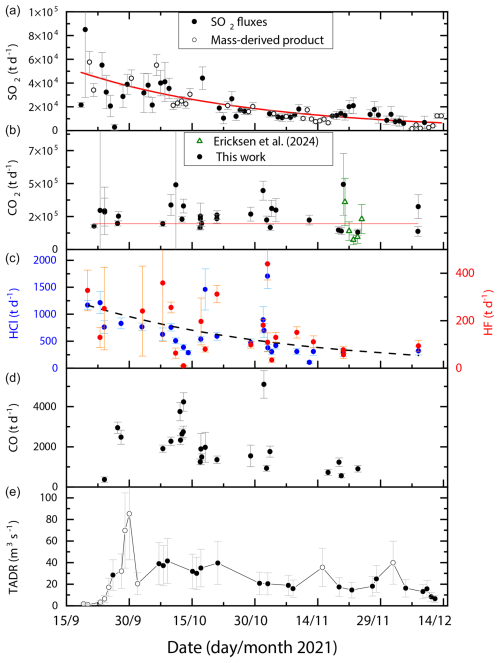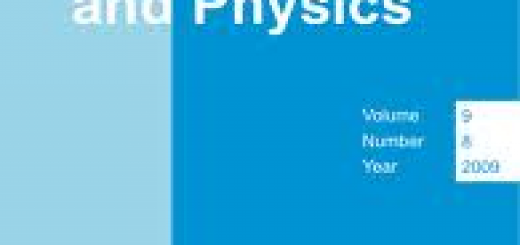“Volatile emissions during the 2021 Cumbre Vieja (La Palma) eruption integrating multiplatform atmospheric observations” published in Atmospheric Chemistry and Physics
Clic here for spanish version
In a world increasingly impacted by climate change and natural hazards, atmospheric monitoring networks are essential for informed decision-making. During the 2021 La Palma eruption, we integrated surface and ground-based remote sensing measurements from global atmospheric network instruments, complemented by rapidly deployed sensors, to monitor volcanic gas emissions up to 140 km from the source. We used direct-sun measurements from low-resolution (EM27/SUN) and high-resolution (IFS-125HR) Fourier transform infrared (FTIR) spectrometers. On La Palma, the EM27/SUN was combined with a differential optical absorption spectroscopy (DOAS) instrument. We present new FTIR retrieval methods to derive the SO2, CO2, CO, HF, and HCl relative abundance in the plume from both low- and high-resolution solar absorption spectra. Using Sentinel-5P TROPOspheric Monitoring Instrument (TROPOMI) data, we derived SO2 fluxes and estimated total emissions of 1.8 ± 0.2 Mt SO2, 19.4 ± 1.8 Mt CO2, 0.123 ± 0.005 Mt CO, 0.05 ± 0.01 Mt HCl, and 0.013 ± 0.002 Mt HF over the course of the eruption (Figure 1). These results are consistent with the mass balance derived from petrologic degassing estimates.

Figure 1(a–d) Emission fluxes of SO2, CO2, HCl, HF, and CO and (e) corrected TADR, following Plank et al. (2023), during the eruption. The thick red line in panel (a) is the exponential fit to the SO2 emission flux time series. The red line in panel (b) is the linear regression for the dataset. The dashed black line in panel (c) is the exponential fit to the HCl time series. Black points in panel (e) are part of the TADR–SO2 emission flux correlation.
This study demonstrates that high- and low-resolution FTIR and DOAS spectrometers, integrated within global monitoring networks, can provide quantitative constraints on volcanic gas composition and fluxes over large distances. Such capabilities are directly applicable to volcanic crisis monitoring, complementing dedicated networks, satellite observations and supporting improved assessments of volcanic impacts on the atmospheric composition at regional scales.
For more details about this work please refer to: Taquet, N., Boulesteix, T., García, O., Campion, R., Stremme, W., Rodríguez, S., López-Darias, J., Marrero, C., González-García, D., Klügel, A., Hase, F., García, M. I., Ramos, R., Rivas-Soriano, P., Léon-Luis, S., Carreño, V., Alcántara, A., Sépulveda, E., Milford, C., González-Sicilia, P., and Torres, C.: Volatile emissions during the 2021 Cumbre Vieja (La Palma) eruption integrating multiplatform atmospheric observations, Atmos. Chem. Phys., 25, 14591–14628, https://doi.org/10.5194/acp-25-14591-2025, 2025. https://acp.copernicus.org/articles/25/14591/2025/



